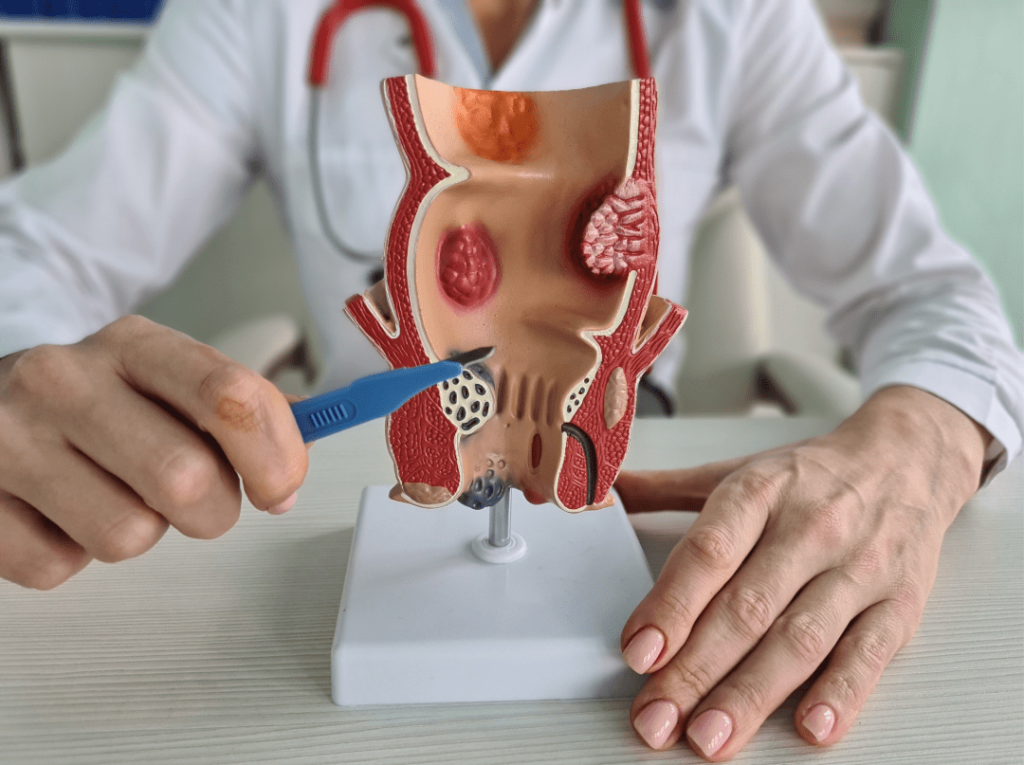
05/05/2024
05/05/2024
Piles or Bawaseer is a broader term used by common man for perianal condition, haemorrhoids. What are Haemorrhoids? Haemorrhoids are inflamed and swollen collections of tissue in the anal area. They can have a range of sizes, and they may be internal or external. Internal piles are normally located between 2 and 4 centimetres (cm) above the opening of the anus, and they are the more common type. External piles occur on the outside edge of the anus.
Haemorrhoids are classified into four grades:

Symptoms
An individual with piles may experience the following symptoms:
Causes
These may be due to:
Lifestyle changes
We will initially recommend some lifestyle changes to manage piles.
Sclerotherapy: Medicine is injected to make the hemorrhoid shrink. The hemorrhoid eventually shrivels up. This is effective for grade II and III haemorrhoids and is an alternative to banding.
Banding: Involves putting an elastic band around the base of the pile, cutting off its blood supply. After a few days, the hemorrhoid falls off. This is effective for treating all haemorrhoids of less than grade IV status.
Open Hemorrhoidectomy: The excess tissue that is causing the bleeding is surgically removed. This can be done in various ways.
Haemorrhoids stapling: Blood flow is blocked to the hemorrhoid tissue. This procedure is usually less painful than hemorrhoidectomy.
Hemorrhoidectomy with energy device: Is newer technique involving energy devices like Liga-Sure and Harmonic to coagulate the blood supply of hemorrhoidal vessels.
Laser Hemorrhoidectomy: Is a newer technique involving Lasers to block the blood supply of haemorrhoidal vessels. (Currently not available in Medicsi)
Piles or Bawaseer is a broader term used by common man for perianal condition, haemorrhoids. What are Haemorrhoids? Haemorrhoids are inflamed and swollen collections of tissue in the anal area. They can have a range of sizes, and they may be internal or external. Internal piles are normally located between 2 and 4 centimetres (cm) above the opening of the anus, and they are the more common type. External piles occur on the outside edge of the anus.
Haemorrhoids are classified into four grades:
Symptoms
An individual with piles may experience the following symptoms:
Causes
These may be due to:
Lifestyle changes
We will initially recommend some lifestyle changes to manage piles.
Sclerotherapy: Medicine is injected to make the hemorrhoid shrink. The hemorrhoid eventually shrivels up. This is effective for grade II and III haemorrhoids and is an alternative to banding.
Banding: Involves putting an elastic band around the base of the pile, cutting off its blood supply. After a few days, the hemorrhoid falls off. This is effective for treating all haemorrhoids of less than grade IV status.
Open Hemorrhoidectomy: The excess tissue that is causing the bleeding is surgically removed. This can be done in various ways.
Haemorrhoids stapling: Blood flow is blocked to the hemorrhoid tissue. This procedure is usually less painful than hemorrhoidectomy.
Hemorrhoidectomy with energy device: Is newer technique involving energy devices like Liga-Sure and Harmonic to coagulate the blood supply of hemorrhoidal vessels.
Laser Hemorrhoidectomy: Is a newer technique involving Lasers to block the blood supply of haemorrhoidal vessels. (Currently not available in Medicsi)
Medicsi, established in 2006, prioritizes cutting-edge diagnostic technology in the treatment decisions of our patients. Our institution emphasizes patient comfort and employs competent senior consultants to oversee their care.
Medicsi, established in 2006, prioritizes cutting-edge diagnostic technology in the treatment decisions of our patients. Our institution emphasizes patient comfort and employs competent senior consultants to oversee their care.
Thanks! We'll be in touch!
Oops! Something went wrong, please try again
© 2025 Medicsi All rights reserved.